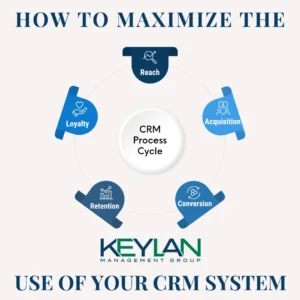- Be Intentional
- Consider blocking out time in your calendar throughout the week for business development and “show up” just as you would with an actual meeting.
- Develop COIs (Centers of Influence) and leverage your professional network
- Tier 1 COIs – these are contacts within your network where you have built a relationship. Spend time with this group. Review a list of target contacts with them from their LinkedIn connections, to whom you would like a warm introduction, and offer to do the same for them. Reciprocity is important.
- Tier 2 COIs – these are contacts within your network that you’ve connected with but need to either reconnect with or spend more time building a relationship prior to asking for a warm introduction as above.
- Create a List of Target Accounts and Contacts
- Prospective customers – these are accounts and contacts that align with your target audience (industry, size, title, etc.) that you can reach out to through a mutual connection on LinkedIn.
- Existing customers – meet to review products and services they’re not currently utilizing and (more importantly) seek to understand how these products and services will benefit them. Ask for referrals and warm introductions.
- Establish Goals for Your Reach Outs
- Set a minimum goal of 50 reach outs per week to prospective customers, existing customers, leads, target accounts, and shared connections. Utilize emails, phone calls, InMail (LinkedIn message), handwritten letters, and direct mail, sending articles/blogs/news that’s relevant to their business. Incorporate old-fashioned drop-ins at their place of business (in accordance with state COVID-19 protocols and your own tolerance for in-person visits).
- Be Reciprocal
- To balance out your relationships, set a minimum goal of providing at least one warm introduction per week for someone else (COI, customer, etc.). Be mindful in making introductions for others just as you seek to have others make introductions for you.
- Use Networking Groups and Associations
- Seek out a networking group to join (Business Network International, Sales & Marketing Executives, Chambers of Commerce, industry groups, etc.). Maximize your time with these groups by joining a committee, attending meetings, being active and scheduling time to network with individual members.
- Be a Thought Leader
- Post an article, blog, and other meaningful content on social media (LinkedIn, Instagram, Facebook, Twitter, website, etc.) that aligns with your industry, role, position, service or product, and which, over a period of time, tells others you are an expert or thought leader in your space. If you struggle in this area, seek out someone to help get you started.
- Maximize Email Marketing
- Leverage the use of email marketing tools such as MailChimp or Constant Contact. Learn how to use these platforms to send out mass email communications to prospects, COIs and customers.
- Review Your Pipeline
- Review each opportunity in your pipeline to ensure you have the right strategy in place and validate if you have answers to key closing questions around Decision Making Process, Timeframe, Competition, Decision Criteria, Budget, Decision Makers, etc. Oftentimes, reassessing opportunities in the pipeline leads to revising your strategy and clarifying key unanswered closing questions that could be impactful in closing this business.
- Revisit Lost Opportunities
- Reach out to lost or unresponsive opportunities to see if anything has changed or check-in to see how things are progressing with their current supplier/vendor.
As you can see, business development requires a multi-faceted approach. There are many activities outlined above that you can work on to be focused, efficient and productive throughout the week.
Be intentional!







